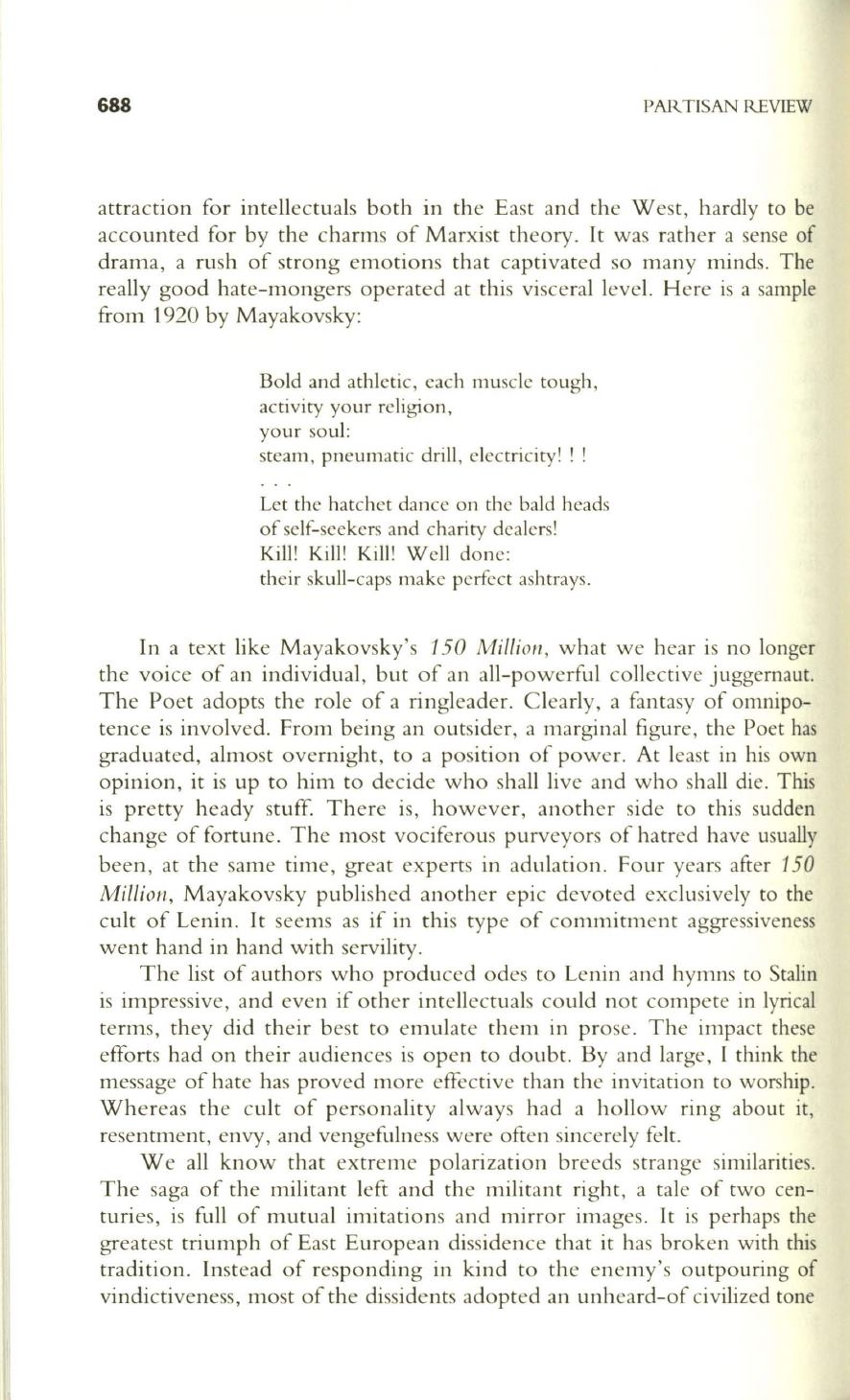
688
PAl~TISAN
REVIEW
attraction for intellectuals both in the East and the West, hardly to be
accounted for by the charms of Marxist theory. It was rather a sense of
drama, a rush of strong emotions that captivated so many minds. The
really good hate-mongers operated at this visceral level. Here is a sample
from 1920 by Mayakovsky:
Bold and athletic, each muscle tough,
activity your religion,
your soul:
steam, pneumatic drill , electricity! !
I
Let the hatchet dance on the bald heads
of self-seekers and charity dealers!
Kill! Kill! Kill! Well done:
their skull-caps make perfect ashtrays.
In a text like Mayakovsky's
150
Mil/ioll,
what we hear is no longer
the voice of an individual, but of an all-powerful collective juggernaut.
The Poet adopts the role of a ringleader. Clearly, a fantasy of omnipo–
tence is involved. From being an outsider, a marginal figure, the Poet has
graduated, almost overnight, to a position of power. At least in his own
opinion, it is up to him to decide who shall live and who shall die. This
is pretty heady stuff. There is, however, another side to this sudden
change of fortune . The most vociferous purveyors of hatred have usually
been, at the same time, great experts in adulation. Four years after
150
Millioll,
Mayakovsky published another epic devoted exclusively to the
cult of Lenin. It seems as if in this type of commitment aggressiveness
went hand in hand with servility.
The list of authors who produced odes to Lenin and hymns to Stalin
is impressive, and even if other intellectuals could not compete in lyrical
terms, they did their best to emulate them in prose. The impact these
efforts had on their audiences is open to doubt. By and large, I think the
message of hate has proved more effective than the invitation to worship.
Whereas the cult of personality always had a hollow ring about it,
resentment, envy, and vengefulness were often sincerely felt.
We all know that extreme polarization breeds strange similarities.
The saga of the militant left and the militant right, a tale of two cen–
turies, is full of mutual imitations and mirror images. It is perhaps the
greatest triumph of East European dissidence that it has broken with this
tradition. Instead of responding in kind to the enemy's outpouring of
vindictiveness, most of the dissidents adopted an unheard-of civilized tone


